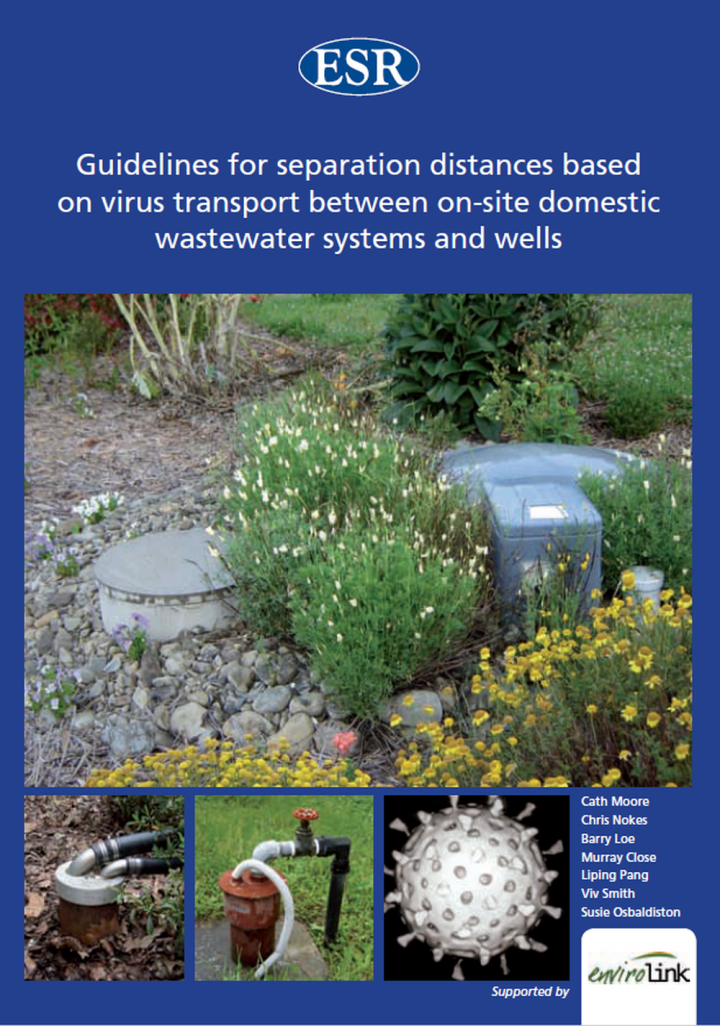Guidelines for separation distances based on virus transport between on-site domestic wastewater systems and wells Moore, C. et al. (2010)
The discharge of domestic wastewater to ground and the proximate abstraction of groundwater for domestic purposes can contaminate drinking water. Regional councils need to consider these situations when implementing the National Environmental Standard (NES) for Sources of Human Drinking Water (NZ Government, 2007). Separation distances between wastewater discharges and groundwater abstractions must be established to reduce the likelihood of contamination. Some regional councils have specified separation requirements based on the transport of bacteria. Others have separation requirements with an uncertain scientific basis, and yet others have no separation requirements. Importantly, none of the existing separation distances allow for the influence of different subsurface materials on the transportation of viruses through the ground. Using bacterial rather than viral transport as the basis for guidelines is a shortcoming for two main reasons. The survival characteristics of viruses favour their transportation over long distances in aquifers, and their high infectivity means they can cause disease, even though their numbers may have been substantially reduced during transport. Further, virus concentrations are reduced more effectively by some subsurface materials than others. The use of arbitrary separation distances that take no account of differences in these materials may over- or under-protect water resources. Consequently, there is a need for a tool that establishes separation distances that are safe with respect to the more robust pathogens such as viruses, and can be used in different hydrogeological settings throughout New Zealand.
Bibliographic information
Moore, C. et al. (2010). Guidelines for separation distances based on virus transport between on-site domestic wastewater systems and wells Environmental Science and Research Limited (ESR), New Zealand, ESR Client Report No. CSC1001 , ISBN 978-1-877166-08-2
Filter / Tags
Recommended by SuSanA (other than SuSanA publications)Groundwater protection (WG11)OtherPractitionersGuidelines and manualsEnglish
Downloads
Guidelines for separation distances based on virus transport between on-site domestic wastewater systems and wells
Type: application/pdf
Size: 1.52 MB

